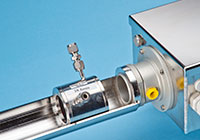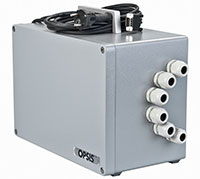OPSIS provides a range of accessories to the continuous emissions monitoring, and process control systems.
Calibration Equipment

OPSIS offers a range of calibration equipment for use with its CEM and process control systems. The system is based on the CB100 calibration bench. This is used with an external CA150 light source, and with an RE060 receiver at each end of the bench itself.
Calibration is carried out by inserting cells with transparent windows into the short light path. Calibration gases are flushed through the cell. A range of cell lengths allows flexible selection of a calibration procedure to suit the system and the compounds it is specified to monitor.
Automatic QAL 3 Calibration
Automatic gas calibration is available by using calibration gas and prefilled calibration cell. The gas cell is filled with a mixture of gases allowing all gases measured by the system to be checked. All data from gas calibration and automatic QAL 3 checks are stored in separate calibration data files, and are sent to the reporting software for calculation.
 Multiplexers
Multiplexers
Multiplexers are used when an OPSIS system includes more than one light path. The use of multiplexers allows a single system to handle several light paths, with the analyser’s computer automatically interrogating each in turn. Various models are available, depending on the number of required connections.
Sensors

OPSIS provides a range of sensors for various applications, such as pressure, and temperature. They are specially designed to be easily integrated into an OPSIS monitoring system using OPSIS data logging hardware and software.
System Shelters
OPSIS System Shelters give the optimal operation environment for the measurement equipment. They are designed for OPSIS air quality monitoring systems. Various container models are available, depending on the application and the extent of the monitoring equipment.

Air-Conditioned Cabinet
The air-conditioned cabinet is designed for housing the monitoring equipment in ambient or stack environments where it is essential to protect the instruments from dust, damp and heat.
The cabinet is equipped with cooling and heating equipment in order to maintain stable temperature. It can be fitted with humidity and/or temperature sensors for checking the humidity and temperature inside the housing and the instruments.